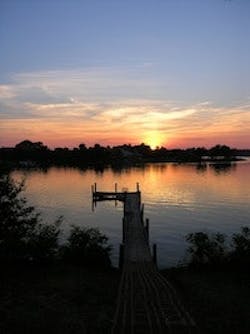U.S. Court of Appeals Upholds Chesapeake Bay TMDL
Source NACWA
The U.S. Court of Appeals for the Third Circuit unanimously upheld the U.S. Environmental Protection Agency’s (EPA) total maximum daily load (TMDL) for the Chesapeake Bay in American Farm Bureau Federation, et al. v. U.S. EPA.
The National Association of Clean Water Agencies (NACWA) intervened in the litigation to support the TMDL and its holistic watershed approach, including allocations for nonpoint source dischargers. The court endorsed many of the arguments NACWA put forth in its brief, especially regarding EPA's legal authority to specifically include agricultural and other nonpoint sources within the overall TMDL.
"Today's ruling by the Third Circuit is an important win for the municipal clean water community, and NACWA is proud to have helped secure this great outcome," said Ken Kirk, NACWA's executive director. "The holistic watershed approach embodied in the TMDL—which requires reductions from all sources of water quality impairment, not just point sources—is the most equitable and cost-effective way to achieve true environmental improvements. NACWA members have done, and will continue to do, their fair share to improve water quality in the Chesapeake Bay watershed. Today's decision ensures that nonpoint sources must also do their part—not just within the Chesapeake Bay, but nationally."
NACWA argued in the case that the watershed approach embodied in the Bay TMDL is both lawful and necessary to restore water quality, and that EPA's inclusion in the TMDL of specific allocations for nonpoint source discharges—especially agricultural sources—was both legal and appropriate. NACWA also highlighted the significant investments its municipal clean water utility members have made and will continue to make to improve water quality, but noted that true water quality advancements can only be achieved with the meaningful participation of nonpoint sources. The Third Circuit appeared highly receptive to these arguments.
Endorsing NACWA's position, a group of major U.S. cities—including New York City, Baltimore, Chicago, Los Angeles, Philadelphia and San Francisco—also filed an amicus curiae brief in the litigation, echoing the importance of the watershed approach for large municipal governments. The court acknowledged the role of the amici in Footnote 7 of its decision.
NACWA has been an active participant in the litigation since its inception to defend the interests of the its municipal clean water utility members and support EPA's watershed approach in the TMDL. The association believes this ruling will help bolster the watershed approach, which is the only viable way to address the growing issue of nutrient pollution in U.S. waters.
Source: NACWA
